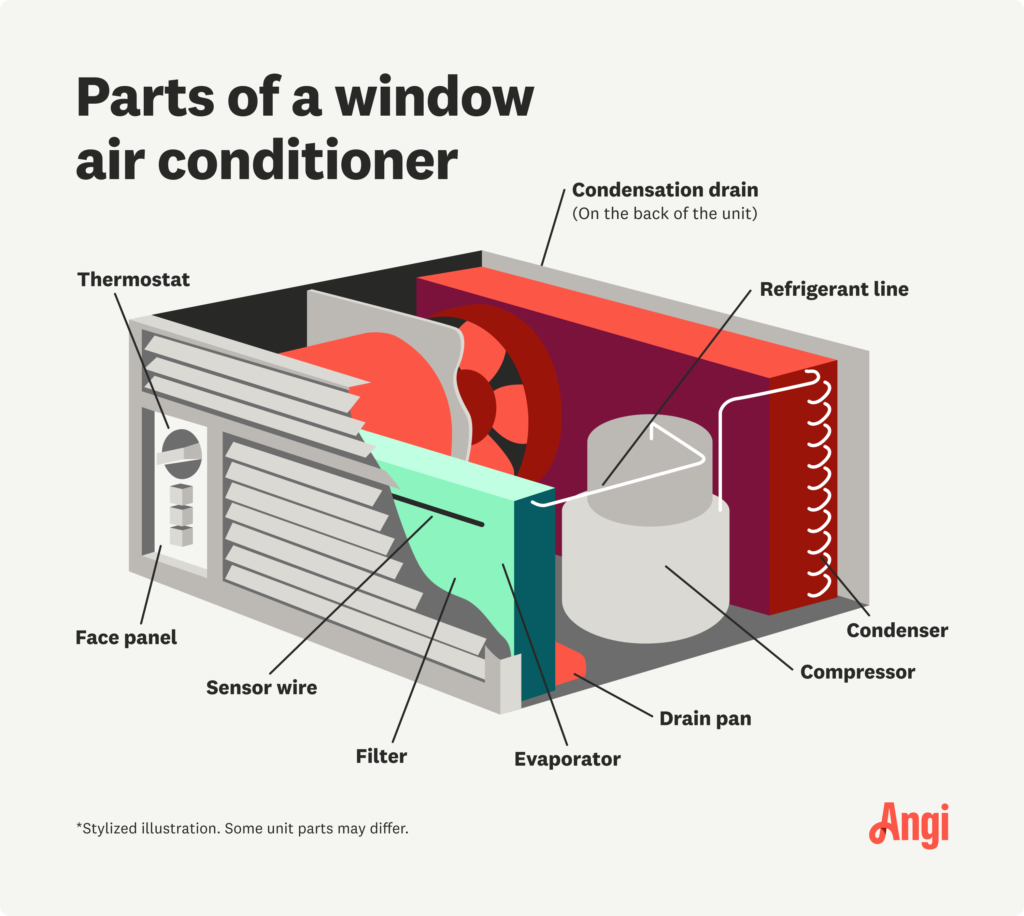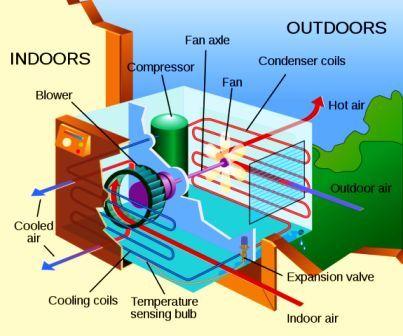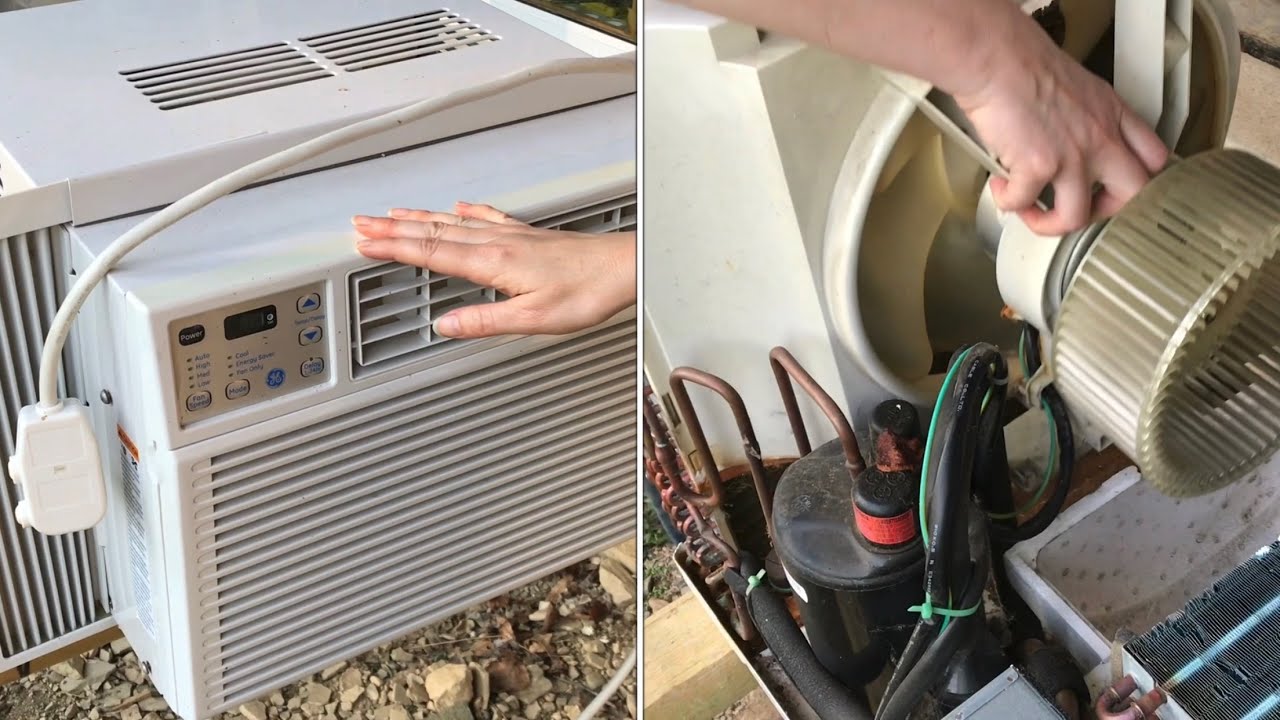Do you ever wonder how those window AC units manage to keep your room cool during the blistering summer months? Look no further, as this article will unravel the mystery behind the functioning of window AC units. From the moment you switch it on to the comforting cool air that fills the room, we will explore the inner workings of these compact cooling machines. Get ready to discover the fascinating science behind how window AC units work and the clever technology that helps you beat the heat effortlessly.
Overview of Window AC Units
Window air conditioning (AC) units are popular cooling devices that are designed to be installed in windows or through wall openings. They offer a convenient and cost-effective solution for cooling specific rooms or areas in a home or office. Let’s explore the key features and components of these units to better understand how they operate and provide cooling comfort.
What is a window AC unit?
A window AC unit is a compact cooling system that is specifically designed to fit within the frame of a window or a wall opening. It consists of several key components, including a compressor, condenser, evaporator, fan, and controls. These components work together to remove heat and humidity from a room, providing cool and comfortable air.
Components of a window AC unit
To understand how a window AC unit works, it’s important to familiarize yourself with its main components:
-
Compressor: This is the heart of the AC unit. It circulates refrigerant and compresses it to increase its temperature and pressure.
-
Condenser: Located on the outside of the AC unit, the condenser releases heat from the refrigerant by allowing it to flow through a network of fins and tubes. This process cools the refrigerant and prepares it for the next stage.
-
Evaporator: Positioned inside the AC unit, the evaporator absorbs heat from the room air. As the refrigerant flows through the evaporator’s coils, it evaporates and transforms from a liquid to a gas, extracting heat and moisture from the air.
-
Fan: The fan inside the AC unit helps in circulating air over the evaporator and condenser coils. It also helps to distribute the cooled air throughout the room.
-
Controls: The AC unit is equipped with controls that allow you to adjust the temperature, fan speed, and other settings. These controls ensure that you can customize your cooling experience according to your preferences.
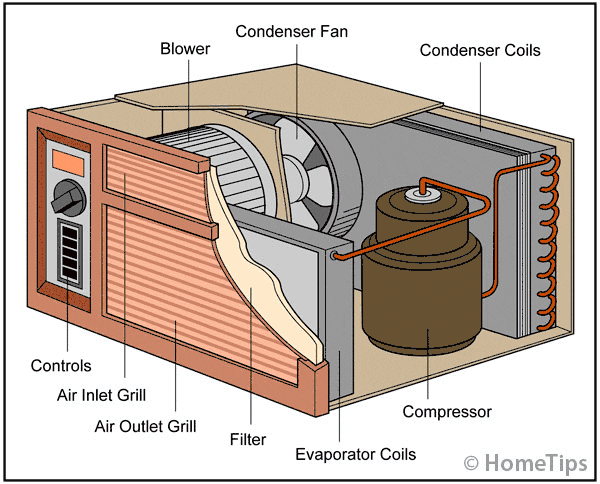
Principles of Cooling
Understanding the principles of cooling is essential to comprehend how window AC units work. Let’s explore two common methods used in these units: the refrigeration cycle and evaporative cooling.
Refrigeration cycle
The refrigeration cycle is the fundamental principle behind how window AC units produce cool air. The cycle involves four main stages:
-
Compression: The compressor compresses the refrigerant gas, which raises its temperature and pressure.
-
Condensation: As the refrigerant passes through the condenser coils, it releases heat to the surrounding environment. This causes the refrigerant to condense into a high-pressure, high-temperature liquid.
-
Expansion: The high-pressure liquid refrigerant passes through an expansion valve, where it rapidly expands. This expansion causes the refrigerant to cool down and convert into a low-pressure mixture of liquid and vapor.
-
Evaporation: The low-pressure refrigerant mixture enters the evaporator coils, where it absorbs heat from the surrounding air, causing the refrigerant to evaporate and transform into a low-temperature vapor. The cooled air is then blown back into the room, lowering the ambient temperature.
Evaporative cooling
While the refrigeration cycle is the primary method of cooling in window AC units, some models also incorporate evaporative cooling. Evaporative cooling works by utilizing the natural process of water evaporation to cool the air.
In these units, a water reservoir or a cooling pad is installed in front of the air intake. As warm air is drawn into the AC unit, it passes over the water reservoir or cooling pad, where the water evaporates. This evaporation process absorbs heat from the air, cooling it before it is circulated into the room.
Evaporative cooling can be especially effective in dry climates, as the process relies on low humidity levels to maximize the cooling effect. However, it may not be as efficient in areas with high humidity, as the air has a reduced capacity to absorb moisture.
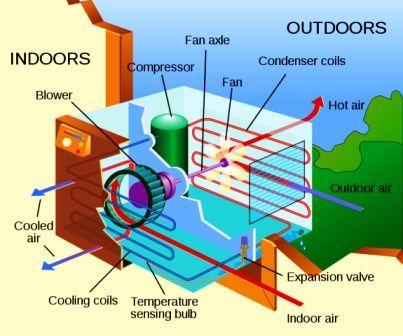
Basic Operation of Window AC Units
Now that we have a good understanding of the components and principles of cooling, let’s delve into the basic operation of window AC units.
Intake and exhaust of air
Window AC units draw in warm air from the room through the front grille or vents located in the unit’s body. This warm air passes over the evaporator coil, where the refrigerant absorbs its heat and moisture. The cooled air is then circulated back into the room through the front grille or louvers on the unit’s front panel.
At the same time, the AC unit expels hot air and excess moisture through the condenser coil, located on the back or sides of the unit. This hot air is blown outside the room, either directly through the back of the AC unit or through an exhaust hose that can be attached to a window or wall opening.
Temperature control
Window AC units provide temperature control options that allow you to set and maintain your desired cooling level. The controls typically include a thermostat, which enables you to adjust the temperature to your comfort level. Once the set temperature is reached, the AC unit cycles the compressor and fan on and off to maintain the desired temperature.
Some advanced window AC units may also offer additional features, such as programmable timers, sleep modes, and energy-saving settings. These features provide flexibility and energy efficiency, allowing you to customize the operation of the AC unit according to your schedule and preferences.
Modes of operation
Most window AC units offer different modes of operation to suit various cooling needs. The most common modes include:
-
Cooling Mode: In this mode, the AC unit operates as a traditional air conditioner, cooling the room to the set temperature.
-
Fan Mode: The fan mode circulates air without actively cooling it. This mode is useful when you want to increase air circulation or create a light breeze without lowering the room temperature.
-
Dehumidification Mode: In this mode, the AC unit primarily focuses on removing excess moisture from the air. It can be beneficial in humid environments or during damp seasons.
-
Energy-Saving Mode: Some AC units come with an energy-saving mode, which optimizes energy consumption by adjusting fan speed and compressor operation. This mode helps reduce energy usage and lower utility bills.
By understanding the basic operation and various modes of operation, you can maximize the performance and energy efficiency of your window AC unit.
In conclusion, window AC units provide a convenient and effective solution for cooling specific rooms or areas. With their components, refrigeration cycle, and principles of cooling, these units offer a reliable and comfortable cooling experience. By familiarizing yourself with their basic operation and modes, you can optimize their performance and create a cool and inviting space to beat the summer heat.
